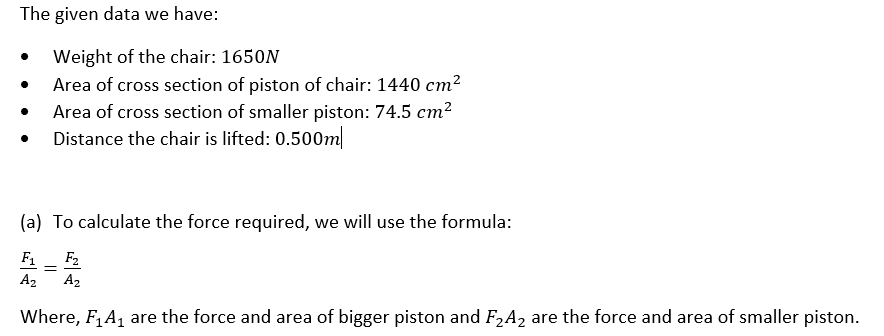A dentist's chair operates using a hydraulic lift. If the chair weighs 1650 N and sits on a piston with cross-sectional area of 1440 cm2, what force must be applied to a piston of cross-sectional area 74.5 cm2 in order to lift the chair a distance of 0.500 m? b)If the machine is ideal (no dissipative energy losses), how far must the smaller piston be depressed? c) If 950.0 J of work is required to move the chair as described, how much energy is lost due to friction?
Fluid Pressure
The term fluid pressure is coined as, the measurement of the force per unit area of a given surface of a closed container. It is a branch of physics that helps to study the properties of fluid under various conditions of force.
Gauge Pressure
Pressure is the physical force acting per unit area on a body; the applied force is perpendicular to the surface of the object per unit area. The air around us at sea level exerts a pressure (atmospheric pressure) of about 14.7 psi but this doesn’t seem to bother anyone as the bodily fluids are constantly pushing outwards with the same force but if one swims down into the ocean a few feet below the surface one can notice the difference, there is increased pressure on the eardrum, this is due to an increase in hydrostatic pressure.
1a) A dentist's chair operates using a hydraulic lift. If the chair weighs 1650 N and sits
on a piston with cross-sectional area of 1440 cm2, what force must be applied to a piston of cross-sectional area 74.5 cm2 in order to lift the chair a distance of 0.500 m?
b)If the machine is ideal (no dissipative energy losses), how far must the smaller piston
be depressed?
c) If 950.0 J of work is required to move the chair as described, how much energy is lost
due to friction?

Trending now
This is a popular solution!
Step by step
Solved in 4 steps with 4 images









